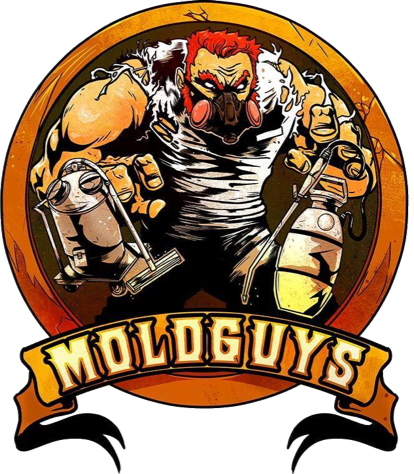Without a doubt, mold is one of the worst things that a homeowner can come across. Not only is it unsightly, but it can cause major damage to the home and health issues for the people who live in it. While many people know the basics, the topic of mold is complex, and there’s a lot of facts that may surprise you. Here are five helpful facts that you may not know about mold, but you should!
Two Types of Mold
There are several different species of mold, but that’s not what we’re talking about here. The two types of mold we’re referring to are viable and nonviable. Viable mold is active and growing. In other words, it is alive. It has the right conditions and enough food to thrive and spread.
Nonviable mold, on the other hand, is mold that is no longer actively growing. It has either lost its food source, or the moisture has dried up. While nonviable mode can no longer spread throughout the house, it releases spores into the air much more than viable mold. These spores can cause allergic reactions or other respiratory symptoms.
Tests Aren’t Needed
You might have heard that when you spot mold in the home that you should contact a professional to have it tested. This is to see which species of mold it is and whether it will damage the home. But quite frankly, it doesn’t matter what type of mold is present in the house; If you see mold, you need to get rid of it. There is no need for testing, only removal.
Humidity Leads to Mold
If you have a leak in the home, mold will quickly grow due to the excess moisture. But what if you just live in a humid location, or your home lacks proper ventilation? Well, the bad news is that if there’s enough moisture in the air and a few spores around, mold will start to take hold. For example, in the bathroom, mold is prevalent due to the constant presence of moisture, usually without much ventilation. Kitchens, too, are prime mold hotspots.
It Doesn’t Smell
You may have heard of a moldy smell, but mold doesn’t actually have an odor of its own. If you notice a scent with mold, it’s not the mold itself but the byproducts created by the mold. As the organism digests the surface that it has taken hold on, it releases odors and toxins. This can range from the typical musty smell we associate with mold to odors of meat, rotten wood, or wet socks.
Cleaning Isn’t Good Enough
Unfortunately, mold removal is not quite the DIY process that you might have hoped. Sure, you can clean mold away from walls and underneath sinks, but merely removing it from the surface doesn’t get rid of the root problem. Due to the way the organism grows, most of the mold body will be inside crevices, cracks, and walls. Cleaning surface mode that you can see is like pruning the hedges; getting rid of some of the branches doesn’t kill the whole plant.
Another problem is that even if you can clean the surface mold, there will still be mold spores in the air. If left to spread, new mold will pop up in other areas of the home. To avoid this problem, you should invest in HEPA air purifiers and thorough cleaning of your air ducts. And since mold results from overly moist environments, you should also look for any leaks or unintentional water sources.
Contact Moldguys Restoration for Professional Mold Removal
If you’ve identified mold in your home and want to get rid of it before it becomes too much of a problem, you can count on Moldguys Restoration to provide thorough removal services. As the experts in mold, we can provide remediation services if needed for your residence or business on the South Shore of MA. We service the towns of Bridgewater, Hanson, Plymouth, and beyond. Fill out an online form or give us a call at 781-910-5029 to schedule a mold removal service.


